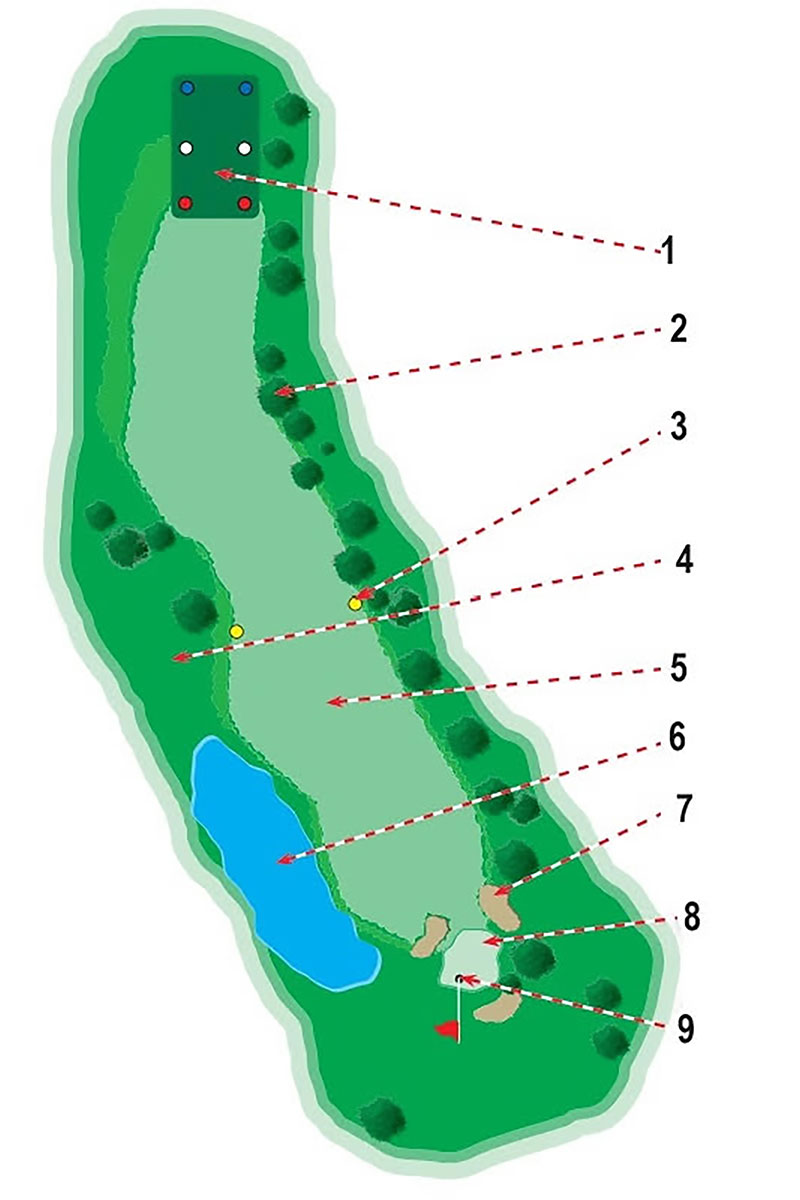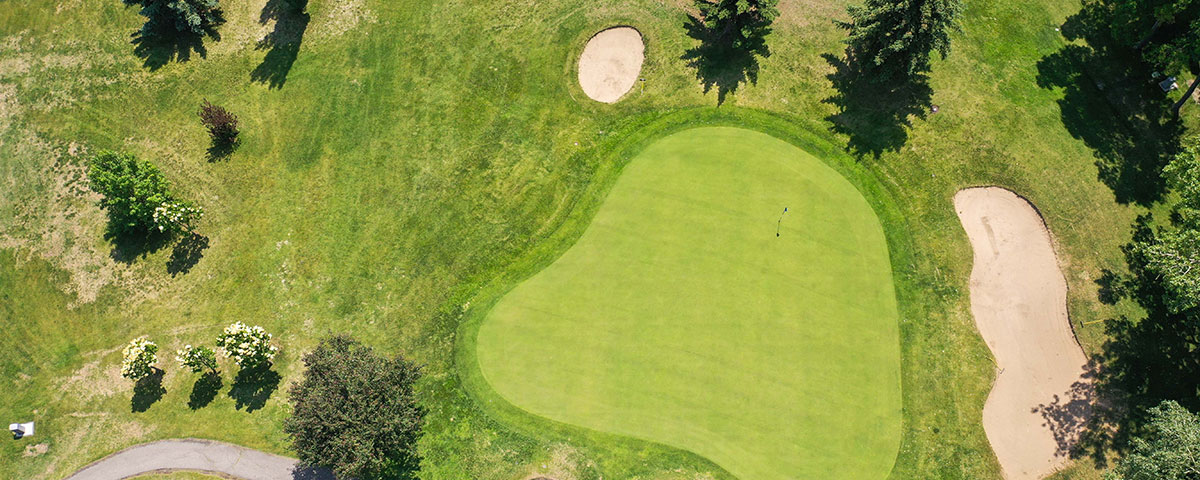Typical hole layout, terminology and scoring
Terminology
- Tee Box: This is the starting point for each hole. Markers indicate where players should tee off. Beginner players should use the forward tee (red markers), and more advanced players use the back tee (blue/white). Players must tee off from between the markers and no further than two club lengths behind the markers.
- Tree Obstacles
- 150 Yard Markers: These markers on the edge of the fairway indicate it is 150 yards to the middle of the green.
- The Rough: This area surrounds the green, fairway, and the tee box where the grass is allowed to grow longer. Courses may have two or three cuts of rough where the grass is a different length in each one. It is considered an obstacle, and hitting the ball from this area is difficult.
- Fairway: The fairway usually runs 30 – 50 yards wide and runs from the tee to the green. Ideally, it's where the ball should land before approaching the green. It is made up of shorter, manicured grass, so it is easier to hit from.
- Water Hazard Obstacle: Any body of water on or around the course, such as a pond or lake, should be avoided. Boundaries of a water hazard are usually defined by either yellow or red stakes. If you hit your ball into a water hazard, it is usually a one stroke penalty.
- The Bunker or Sand Trap Obstacles
- Green/Putting Surface: This is where the flagstick (pin) is located. It is an extremely smooth surface surrounding the hole where players putt. The edge of the green is bordered with slightly longer grass and is called the "fringe”.
- Flag stick (Pin)/Hole (cup): A flag on a stick in the hole indicates the location of the hole (cup) to players that are off the green. The hole/cup is the finishing point.

Choosing the right course for you
To enhance your enjoyment of the game and that of others, please choose a golf course that matches the skill level of everyone in your group.
Shorter and less difficult
For beginners, less experienced players or golfers with limited walking ability.
Courses: Lakeview and McCall Par 3
Moderate length and difficulty
For golfers with intermediate playing ability.
Courses: Shaganappi Point and Valley 9
Longest and most difficult
Due to the speed of play expectations, advanced playing abilities are required. It is not recommended for less experienced or novice players.
Courses: Confederation Park, Maple Ridge and McCall Lake 18
How to keep score
Scoring may just be the easiest part of golf. A golf score is simple: Each time you hit the ball, it's called a stroke. The total number of strokes it takes to get the ball in the hole is your score for that hole. For example, if it takes six strokes to get the ball in the hole, the score on that hole is 6.
Scoring terminology
- Albatross: Extremely rare (even for the pros). When your score is three shots less than the par for the hole (i.e., a score of 2 on a par 5 hole).
- Eagle: When your score is two shots less than the par for the hole (i.e.: a score of 3 on a par 5 hole).
- Birdie: When your score is one shot less than the par for the hole (i.e.: a score of 3 on a par 4 hole).
- Par: The standard number of strokes it should take to get the golf ball from the tee to the hole. When your score is equal to the par of the hole (i.e.: a score of 4 on a par 4 hole).
- Bogie: When your shot is one shot more than the par for the hole (i.e.: a score of 4 on a par 3 hole).
- Double bogie: When your score is 2 shots more than the par for the hole.
- Triple bogie: When your score is 3 shots more than the par for the hole.


